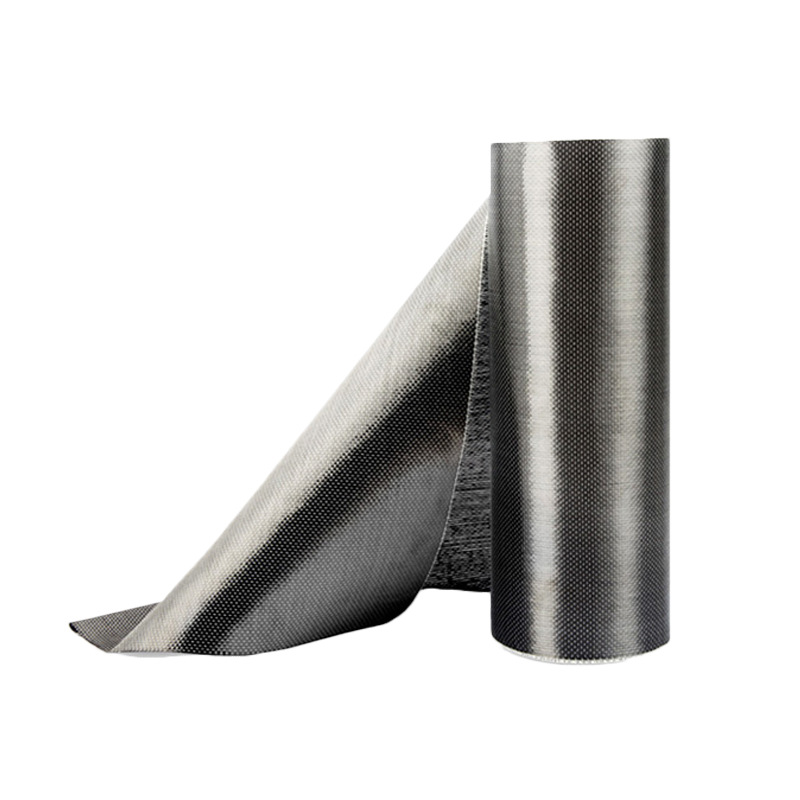Functions and applications of carbon nanotube reinforced composites
- Aug-20-2025
- (52) Views
一.Introduction to Carbon Nanotubes
Carbon nanotubes (CNTs) are tiny, tubular structures made by rolling graphene into a cylinder. Graphene is composed of carbon atoms arranged in hexagonal rings. These tubes range in diameter from 0.4 to 50 nanometers. CNTs are lightweight yet very strong and durable. They have strong carbon bonds, which give them excellent properties. They can also withstand high temperatures. CNTs can be divided into three categories: single-walled carbon nanotubes (SWCNTs), double-walled carbon nanotubes (DWCNTs), and multi-walled carbon nanotubes (MWCNTs). Their extremely high surface area and large aspect ratio give them extraordinary mechanical strength (100 times greater than steel) and thermal and electrical conductivity similar to copper.
Figure 1. Schematic diagram of (a) single-walled carbon nanotubes and (b) multi-walled carbon nanotubes.
Carbon nanotubes (CNTs) have a wide range of applications, covering various fields such as materials science, energy, electronics, sensors, etc. CNTs have excellent mechanical properties and are widely used in carbon composites and composites containing CNTs as fillers. Conversely, its thermal properties can be used for applications such as heat dissipation. The high surface area/volume ratio makes CNTs useful as sensors, especially in biomedical applications. Due to their high electrical conductivity, CNTs can be used as supercapacitors and actuators in electronics. In addition to this, CNTs can also be used as scanning probe tips for hydrogen storage, nanoelectromechanical devices, etc. The biomedical applications of CNTs range from tissue engineering (promoting neuron growth) to the development of strong and lightweight prosthetics and neuroprosthetics due to their ability to interact with electrically active tissues and their excellent flexibility.
There are three main methods for producing carbon nanotubes: arc ablation, laser ablation, and chemical vapor deposition (CVD). The arc ablation method, primarily used to produce SWCNTs, is simple and rapid, but it is not suitable for large-scale production, and the CNTs produced by this method exhibit numerous drawbacks, such as low yield strength and difficulty in purification. CVD can produce CNTs at low temperatures and atmospheric pressure, and is easy to implement and inexpensive. CVD allows for large-scale production of CNTs, and the number, diameter, length, and orientation of their walls can be controlled during the growth process. Due to their unique molecular structure and the exceptionally strong bonding between carbon atoms, CNTs outperform all existing fibers and are widely considered the superfiber of the future. Due to their exceptional electrical, thermal, mechanical, and chemical properties, CNTs have applications in electronic and electrical components, biopharmaceutical products, composite materials, chemical sensors, and other fields. CNTs also play an important role in improving the mechanical, tribological, electrical, and thermal conductivity of metal-based composites, such as those based on magnesium, aluminum, copper, nickel, titanium, and iron. As a reinforcement for ceramic matrix composites (CMCs), carbon nanotubes can also improve their toughness and enhance their plastic deformation capacity. CNT-reinforced FRP materials are also widely used in aerospace, automotive engineering, marine engineering, sports equipment, and many other fields.
1. Carbon Nanotube Polymer Composites and Reinforced Composites
Polymer composites have a wide range of applications due to their excellent combination of mechanical, thermal, and electrical properties. The addition of nanofillers to polymer resins can provide promising properties for materials in nearly all fields. For example, carbon nanotubes (CNTs) as reinforcements in polymer composites can achieve significantly higher mechanical strength and elastic modulus compared to other high-performance fibers such as Kevlar and carbon fibers. Specifically, their tensile strength and elastic modulus reach 150 GPa and 1 TPa, respectively, making them stronger and stiffer than steel while being three to five times lighter. The table below summarizes the latest research on CNT-polymer composites in various fields.
图
As reinforcements, CNT-modified composites not only improve their mechanical properties, but their electrical conductivity and other functional properties make them highly attractive for practical engineering applications. With the recent development of numerous new intelligent materials, carbon nanotubes, with their exceptional strength and stiffness, can serve as high-quality reinforcements, significantly improving the interlaminar bond between reinforced plastics. This multi-scale, multifunctional reinforcement not only leverages the exceptional mechanical properties of CNTs, but also retains the excellent properties of traditional fiber-reinforced materials while adding the functional properties of nanomaterials (conductivity, sensing, and thermal resistance). This material is suitable for complex loading environments requiring high interlaminar bond strength in reinforced plastics, such as bird strikes, dropped tools (impact loads), and the cyclic rotation of wind turbine blades (fatigue loads). Furthermore, this lightweight, high-strength material can effectively improve energy efficiency in practical applications.
二.Application fields of carbon nanotube composites
1. Electronic applications
The application of carbon nanotube-polymer composites in the electronics field, especially in the development of electronic devices, is rapidly emerging. The growing demand for advanced materials with tailored electrical properties makes carbon nanotubes the most attractive nanomaterial for electrical and electronic devices. Carbon nanotube-polymer composites are also very useful in the preparation of solar cells. Elastic carbon nanotube-polymer composites have great potential for the production of new photovoltaic cells using screen printing technology. Carbon nanotube-polymer composites have high optical transmittance and are manufactured at a low cost. The nanocomposites have improved elastic properties and significantly enhanced optical and electrical parameters, making them potential for use as solar cell coatings.
2. Aerospace applications
The aerospace industry requires extremely strong and durable materials to be embedded as components in aerospace equipment. Due to the various properties of carbon nanotubes (CNTs), researchers in the aerospace field are actively studying carbon nanotube composites to improve the electrical properties of epoxy resin composites. Therefore, carbon nanotube-polymer composites are crucial in the aerospace field because their structural properties can be applied to fields such as anti-radar protectors, anti-static materials and spacecraft. Since 2006, carbon nanotube-reinforced epoxy polymer composites have been widely used in aerospace/spacecraft research and development. Carbon nanotubes are an emerging advanced material that can make structures lightweight, high-temperature resistant, and have a high strength-to-weight ratio. CNT-reinforced polymer composites can be used as heat absorbing media, for example as electromagnetic wave absorbers in the aerospace industry.
3. Automotive applications
In the automotive sector, nanocomposites, particularly carbon nanotube (CNT) composites, offer numerous benefits, including improvements to existing technologies. Carbon nanotube-reinforced polymer composites can be used in automotive components, including exhaust systems, catalytic converters, suspension and braking systems, electronic equipment, engines, powertrain materials, and body parts. Traditional fillers such as mica, calcium carbonate, and talc have been widely used in automotive components to improve melt viscosity, optical clarity, and stiffness. For example, glass fiber was introduced due to its high stiffness, but its manufacturing is difficult, resulting in high production costs. Furthermore, traditional fillers and glass fiber must be added at high concentrations to improve dimensional stability, increase mechanical modulus, and enhance surface quality. Therefore, the introduction of CNT-polymer composites in this industry could help address these challenges with traditional fillers.
CNT-polymer composites have been found to have a high strength-to-weight ratio, which is why lightweighting cars can reduce fuel consumption. This reduces carbon dioxide emissions from vehicles, helping to slow global warming. A 25% reduction in vehicle weight could reduce crude oil consumption by up to 250 million barrels per year. Many automakers are already using nanocomposites in trunk lids, car seats, dashboard coverings, and roofs.
Furthermore, the addition of MWCNTs to epoxy composites can improve the adhesion strength of the matrix, thereby helping to reduce water absorption, improve hydrophobicity and corrosion resistance.
4. Sensors
CNT-reinforced polymer composites have a powerful ability to detect chemicals in the air, potentially enabling a variety of applications. Their excellent gas molecule sensing capabilities could benefit space exploration, environmental monitoring, and medical, industrial, and agricultural applications. For example, in industrial and medical settings, monitoring environmental pollution requires the detection of carbon monoxide, nitrogen oxides, and ammonium.
 English
English





